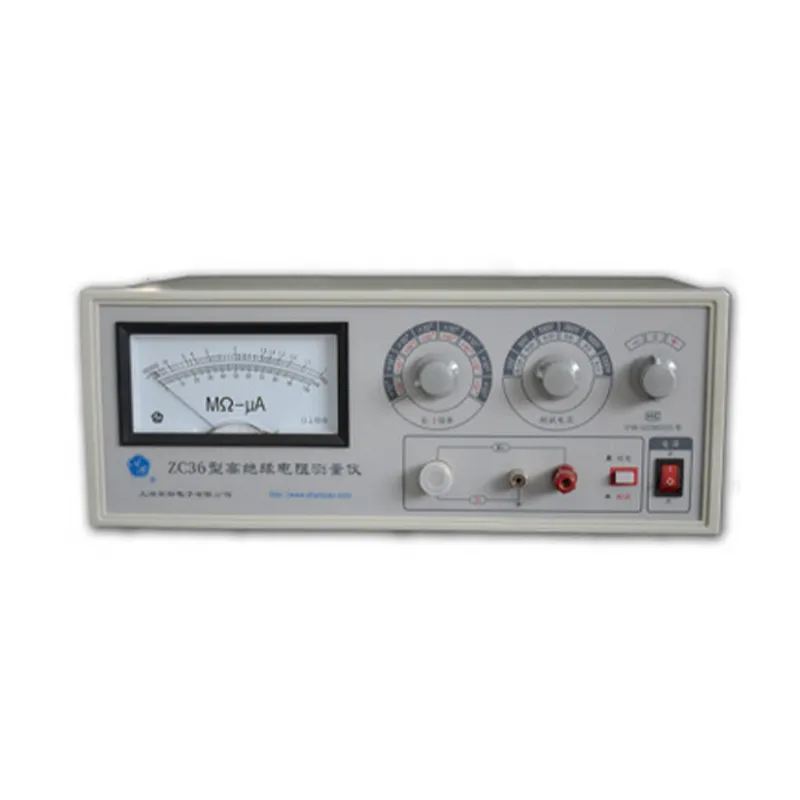conductor resistance measurement equipment
Understanding Conductor Resistance Measurement Equipment
In the realm of electrical engineering and power systems, the measurement of conductor resistance is a critical aspect that cannot be overlooked. Conductor resistance affects the efficiency of electrical systems, contributing to energy losses and influencing the overall performance of electrical equipment. To ensure optimal operation, specialized equipment is employed for accurately measuring the resistance of conductors. This article aims to shed light on conductor resistance measurement equipment, its significance, operational principles, and applications.
Importance of Conductor Resistance Measurement
Conductor resistance measurement is crucial for several reasons. Firstly, it helps in determining the quality and reliability of electrical conductors. Over time, factors such as temperature fluctuations, mechanical stresses, and environmental conditions can affect the resistance of conductors. Regularly measuring resistance can help identify potential issues before they lead to failures or inefficiencies.
Secondly, conductor resistance plays a significant role in calculating voltage drops within an electrical circuit. High resistance can lead to substantial voltage drops, which can affect the performance of electrical devices. By ensuring that conductors remain within acceptable resistance limits, engineers can maintain optimal functioning of the entire electrical system.
Finally, accurate resistance measurement helps in compliance with relevant safety standards and regulations. Various industries are mandated to adhere to specific resistance specifications, and regular testing ensures these standards are met.
Types of Conductor Resistance Measurement Equipment
There are several types of equipment designed for measuring conductor resistance, each suited to different applications and environments.
1. Digital Micro-ohmmeters These devices are specifically designed to measure low resistance values, typically in the micro-ohm range. They use a four-wire measurement technique to eliminate the effects of lead resistance and ensure precise readings. Digital micro-ohmmeters are widely used in testing electrical connections, circuit breakers, and transformers.
2. Ammeter-Voltmeter Method This traditional method involves measuring the current flowing through a conductor and the voltage across it. By applying Ohm's Law (R = V/I), the resistance can be computed. While this method is straightforward, it can sometimes be affected by measurement inaccuracies due to lead resistance.
3. Bridge Resistance Meters These sophisticated devices employ a bridge circuit to compare an unknown resistance with a known standard. They offer high accuracy and are ideal for laboratory use or detailed analysis of conductor resistance in research environments.
conductor resistance measurement equipment

4. Conductivity Meters Primarily used in the semiconductor industry, these meters assess the conductive properties of materials, providing insights into resistivity and enabling quality control throughout the manufacturing process.
Operational Principle
The fundamental principle behind most conductor resistance measurement devices hinges on Ohm's Law. Several advanced measurement techniques can enhance accuracy
- Four-Wire Measurement This technique helps eliminate the impact of lead resistance. Four separate wires are used two to supply current and two to measure voltage across the conductor. This creates a more accurate resistance reading.
- Temperature Compensation Resistance measurements can vary with temperature. Many modern devices include temperature compensation features, which automatically adjust measured resistance based on the temperature at the time of measurement.
Applications of Conductor Resistance Measurement
Conductor resistance measurement equipment is utilized in various fields
- Power Generation and Distribution Ensuring the efficiency of conductors used in transmission lines, transformers, and circuit breakers. - Manufacturing Quality control in the production of electrical components, ensuring the materials meet specific conductivity standards. - Research and Development Laboratory testing of new materials and technologies in the field of electrical engineering.
Conclusion
In conclusion, conductor resistance measurement is a vital process in maintaining the efficiency, safety, and reliability of electrical systems. The use of specialized measurement equipment allows professionals to conduct thorough inspections and ensure compliance with industry standards. From digital micro-ohmmeters to sophisticated bridge meters, the advancement in technology continues to enhance measurement accuracy, crucial for the ever-evolving landscape of electrical engineering.
-
reliable-performance-testing-with-advanced-aging-chamber-solutions
NewsAug.23,2025
-
advancing-precision-with-profile-projector-technology
NewsAug.23,2025
-
uv-led-ultraviolet-crosslinking-technology-innovation-and-prospects
NewsAug.23,2025
-
ensuring-safety-and-compliance
NewsAug.23,2025
-
electrical-properties-testing-in-modern-applications
NewsAug.23,2025
-
universal-tensile-testing-machine-applications-in-modern-electrical-and-material-testing
NewsAug.23,2025
 Copyright © 2025 Hebei Fangyuan Instrument & Equipment Co.,Ltd. All Rights Reserved. Sitemap | Privacy Policy
Copyright © 2025 Hebei Fangyuan Instrument & Equipment Co.,Ltd. All Rights Reserved. Sitemap | Privacy Policy

